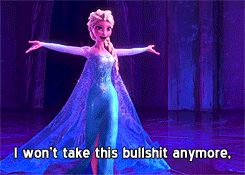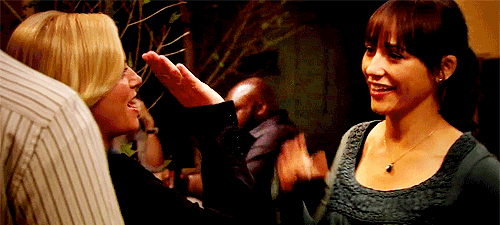
Think of your favorite movie.
Got it? Good. Keep it in mind while you read this.
My favorite movie is Get Smart, because I love anything with Steve Carell. Recently in one of my classes, a teacher asked us for our favorite movies, then determined, one by one, if they passed the Bechdel Test.
The Bechdel Test -- created by Alison Bechdel in her 1985 comic, "Dykes to Watch Out For" -- is a well-known measurement of gender bias in movies.
The comic strip that popularized the test was titled "The Rule," and it says that to pass the test the movie must have three things.
- Two female characters (preferably named),
- Who talk to each other,
- About something other than a man.
When I first learned about this test I scoffed, thinking, "There are plenty of movies that would pass that test." I thought about Get Smart, but realized soon enough that it doesn't pass the test. In fact, I don't think there is another female character besides Anne Hathaway.
I slowly realized, "Maybe there aren't that many movies that pass the test."
The Bechdel Test is more important than most of us realize and, in fact, it has launched a dialogue about not only the lack of females in movies, but also the racial disparities we often see in cinema.
The female characters in films are typically not substantial, especially compared to the male characters they "share" the screen with. The women are often portrayed as one-dimensional and male-dependent. They are "damsels in distress," desperate to be saved by -- yeah, you guessed it, a dude.
Frozen was popularly depicted as a feminist victory for Disney, and while it does pass the Bechdel Test -- it isn't quite the victory we were expecting. In an article entitled, "The problem with false feminism," blogger Dani Colman discussed why Frozen left her "cold."
"Just like every other Disney princess, Anna states what she wants very early on. She wants to find 'the one,'" Coleman said. "And, just like every other Disney princess, she gets exactly what she wants."
She goes on to say that it isn't surprising that Frozen passed the Bechdel Test considering its two main characters are female. In fact there are, many other Disney movies pass the Bechdel Test with flying colors.
And while the Bechdel Test is a good indication of equal gender representation within a movie, it doesn't mean that the movie receives an A+ from feminists overall. In fact, sometimes the Bechdel Test can be a misleading gauge of "feminism" in movies.

And it isn't just Frozen.
Recently, Disney was slammed when blogger Something Classy noticed that most female characters shared strikingly similar facial features, while the male characters were much more diverse.
The evidence is fairly damning.
The female characters all have the same big doe-eyes and cute little button nose. Look at Elsa and Anna below, notice a certain trend?
However, each male character has a very different face shape, with a myriad of eye shapes.
And the divide isn't just between gender. There is also an enormous lack of racial diversity in media, films and advertising.
The annual Hollywood Diversity report from the Bunche Center at the University of California, Los Angeles studied 172 films in 2011. The report shows, 89.5 percent of leading actors white, while only 10.5 percent were racial minorities. The actors were 74.4 percent male, while 25.6 were females.
At the 2014 Academy Awards, only three out of the eight nominees for Best Picture passed the Bechdel Test.

Not one of these movies features a woman as their leading character of main story arc. The closest to doing so is Boyhood, but even then the movie title implies otherwise. If you ask me, the titles would look a little more like this.

But the sad truth is, this isn't surprising when taken into account who is voting for the movies nominated. The LA Times reported that in 2012 that Oscar voters were 94 percent white and 77 percent male.
The Bechdel Test is not an indication of a wonderful feminist movie, and as many have pointed out, the test has its flaws.
For example, Gravity featuring a female astronaut, played by Sandra Bullock, doesn't pass the test, but Legally Blonde does, simply because Elle and her friend talk about their dogs in a scene or two.
This goes to show that the test does not measure the artistry or gender equality within a film, but rather represents a superficial measure of the value of a film. The measures used to gauge gender equality with the Bechdel Test are too two-dimensional to accurately measure the message of female empowerment n movies.
Feminism, like movies, is nuanced, and that's what the Bechdel Test lacks.
Frankly, I'm sick of seeing films wherein women are portrayed as submissive, indecisive and dependent on men. It's disappointing to see the lack of diversity in many of our movies today.
However, the one thing I like about the Bechdel Test is that it triggers discussions, and hopefully one day, movies passing the test will be the norm, not the exception.

